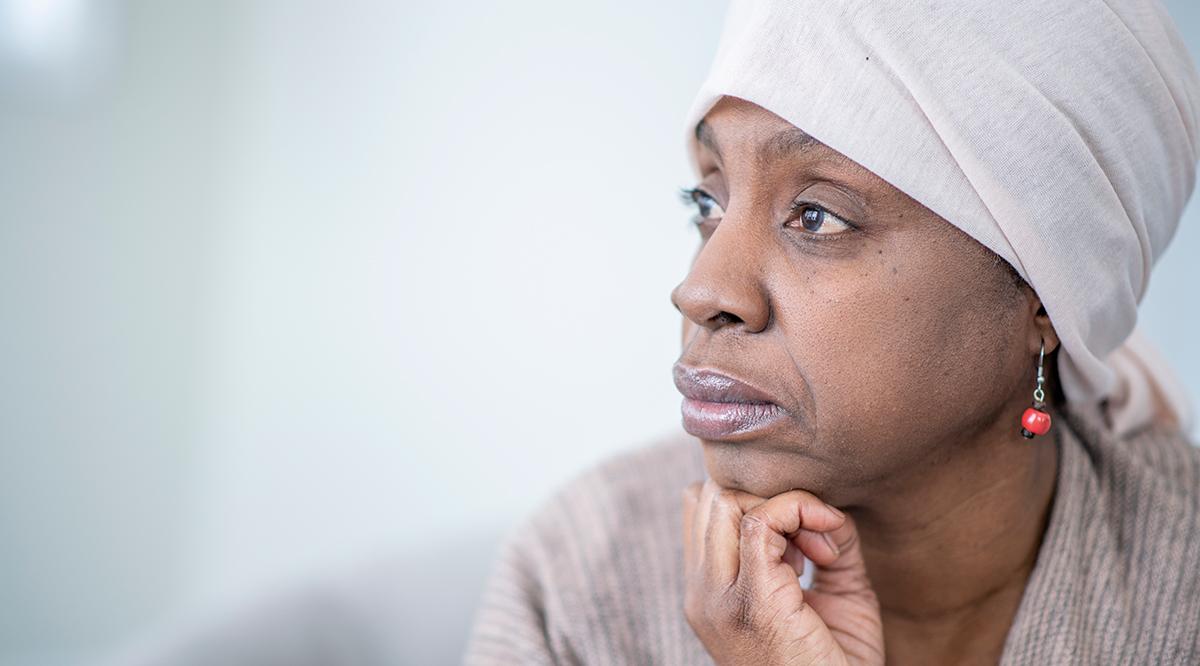As a dermatologist practicing in Detroit, Michigan, a city where the population is more than 80% people of color, Meena Moossavi, MD, has seen how health inequities have disproportionately harmed her patients. At times, her patients of color have come to her with late-stage skin cancer that she believes may have been better treated if it had been detected earlier.
Because of a lack of awareness of the risks of skin cancer among Black people and clinicians’ lack of experience diagnosing skin conditions in people with darker skin, melanoma for Black patients can go untreated far longer than when it’s identified for White patients, Moossavi explains.
“The patients have to understand they are at risk so they can come to the doctor,” she says. “The providers need to know what to look for so they can diagnose as soon as possible.”
Moossavi had these inequities in mind when she and her colleagues at Wayne State University School of Medicine, where she is an assistant professor, began their research into disparities in outcomes for people diagnosed with melanoma, an aggressive form of skin cancer.
They looked at surveillance data to study the incidence and survival of melanoma patients by race and ethnicity from 2000 to 2016 in Wayne County, which includes Detroit, and found that Black patients were about three times more likely than their White counterparts to die within five years of their diagnosis. The analysis further found that the higher mortality rates were most likely due to later-stage diagnosis.
“If you get diagnosed right away, it’s a better prognosis than when the diagnosis is made after months or years,” Moossavi says. “I’ve been talking about this with the [medical] students and residents and we always come to the same conclusion: Education is the most important thing.”
Understanding the risks
More than 1.3 million people in the United States were living with melanoma of the skin in 2019, making it one of the top five most common cancers in the country. It’s also become more common in the past few decades, with the rate of diagnosis increasing from 15 new cases per 100,000 people in 1992 to 24 new cases per 100,000 people in 2019, according to the National Cancer Institute.
Black people are far less likely to develop melanoma than non-Hispanic White people (at a rate of 1 per 100,000 compared to 30 per 100,000) due to the protection that melanin, the body’s natural skin pigment, provides from damaging ultraviolet rays. However, Black people who do develop the cancer have a much lower five-year survival rate. From 2011 through 2015, the five-year survival rate in the United States for Black patients was 66%, compared with 90% for non-Hispanic White patients, according to a 2019 study published by the Centers for Disease Control and Prevention.
“We have a unique responsibility to understand how skin color and ethnicity play into diagnosis,” says Loren Krueger, MD, an assistant professor of dermatology at Emory University School of Medicine in Atlanta, Georgia.
Part of the issue is that melanoma in Black patients often presents as acral lentiginous melanoma (ALM), which is found on the palms, soles of the feet, or beneath the nails, as opposed to parts of the skin that are more exposed to sunlight, as is more commonly seen in lighter skin tones, Krueger says.
It is not only melanoma in Black individuals that dermatologists may struggle to diagnose. In general, dermatologists are more confident identifying all types of skin conditions on lighter skin compared to darker skin, according to Krueger’s research. Krueger and her colleagues surveyed dermatologists, presenting them with photos of various skin conditions in both lighter and darker skin tones, and found that clinicians were more likely to recommend biopsy for noncancerous conditions and less likely to identify malignant conditions in darker skin, while they were more likely to accurately diagnose conditions on lighter skin tones.
“We have a unique responsibility to understand how skin color and ethnicity play into diagnosis.”
Loren Krueger, MD
Emory University School of Medicine in Atlanta, Georgia
These findings suggest that many dermatologists are less likely to confidently and accurately diagnose conditions, such as lichen planus and psoriasis, on skin of color which could contribute to later diagnosis and disparate outcomes for patients of color, Krueger explains.
“We have to make sure that we’re well trained in features that are commonly seen in both benign and cancerous conditions in both light and dark skin,” she says. “I think there is a lack of exposure and training in darker skin tones overall.”
Diversifying curricula
During her first year of medical school at the University of Illinois College of Medicine in Peoria, Katherine Perlman noticed that her dermatology curriculum failed to include skin of color.
“It's a very visual field and I noticed our [educational] resources were almost entirely on pathologies on very light skin,” says Perlman, who is now a fourth-year student planning to pursue a residency in dermatology.
After consulting dermatologists and mentors, she decided to lead a review of medical student resources for identifying skin conditions and found that, as of 2021, almost all available resources lacked representation of skin of color. Their analysis found that, across all images, only 15% were of skin of color and that some skin conditions that are commonly seen in people of color, such as alopecia and eczema, had very little skin of color representation in the resource materials.
“This is a huge problem for medical students because if you’re not trained to identify and describe even the most common skin conditions, then you’re hurting patient care,” Perlman says.
Recently, however, there has been a push to diversify educational materials to help bridge the knowledge gap. Several medical schools have begun the process of updating dermatology curricula to include more diverse images. And the American Academy of Dermatology released a new skin of color curriculum in March.
“It's a very visual field and I noticed our resources were almost entirely on pathologies on very light skin.”
Katherine Perlman, fourth-year medical student
University of Illinois College of Medicine in Peoria
At Wayne State University in Detroit, medical students approached Moossavi to discuss reevaluating the skin color representation in the dermatology coursework in 2020.
“They helped me open my eyes to look at our own curriculum,” she says. Moossavi is grateful that the students brought the issue to her attention.
At the University of Alberta Faculty of Medicine and Dentistry in Canada, the events surrounding the death of George Floyd in 2020 that sparked an international racial reckoning also spurred students and faculty at the university to action.
“We’d already recognized this was an issue in our curriculum,” says Jaime Yu, MD, an associate professor and course coordinator for the university’s medical program.
Yusuf Yousuf, one of the founding members of the university’s Black Medical Student Association, completed a summer project to update the curriculum to be more representative. The updates included incorporating cases showing darker skin into small group case discussions and adding questions about disease presentation on dark skin to quizzes, Yu says.
“They may not remember all the details, but early exposure sets up a new culture of ‘I should look up more, learn more,’” Yu says. “Medicine has to be more humble, to recognize that we’re not providing the best services to all individuals in all parts of our society equally.”
“We can do better, and education is a way to do that.”
That education can also go beyond medical students and providers and into the community. “I would love a public health campaign,” Perlman says. “There is a misconception that if you have darker skin, you can’t get skin cancer.”
Raising awareness among people of color and their health care providers about how to spot melanoma and other concerning skin conditions early, as well as improving access to health care for people of color, could go a long way in reducing the existing disparities, Krueger says.
“We know time is so important in melanoma diagnosis,” she says. “I think, ultimately — dermatologists and physicians in general — if we aim to provide health equity and improve access to dermatologists, this may very well help to mitigate the disparities.”

